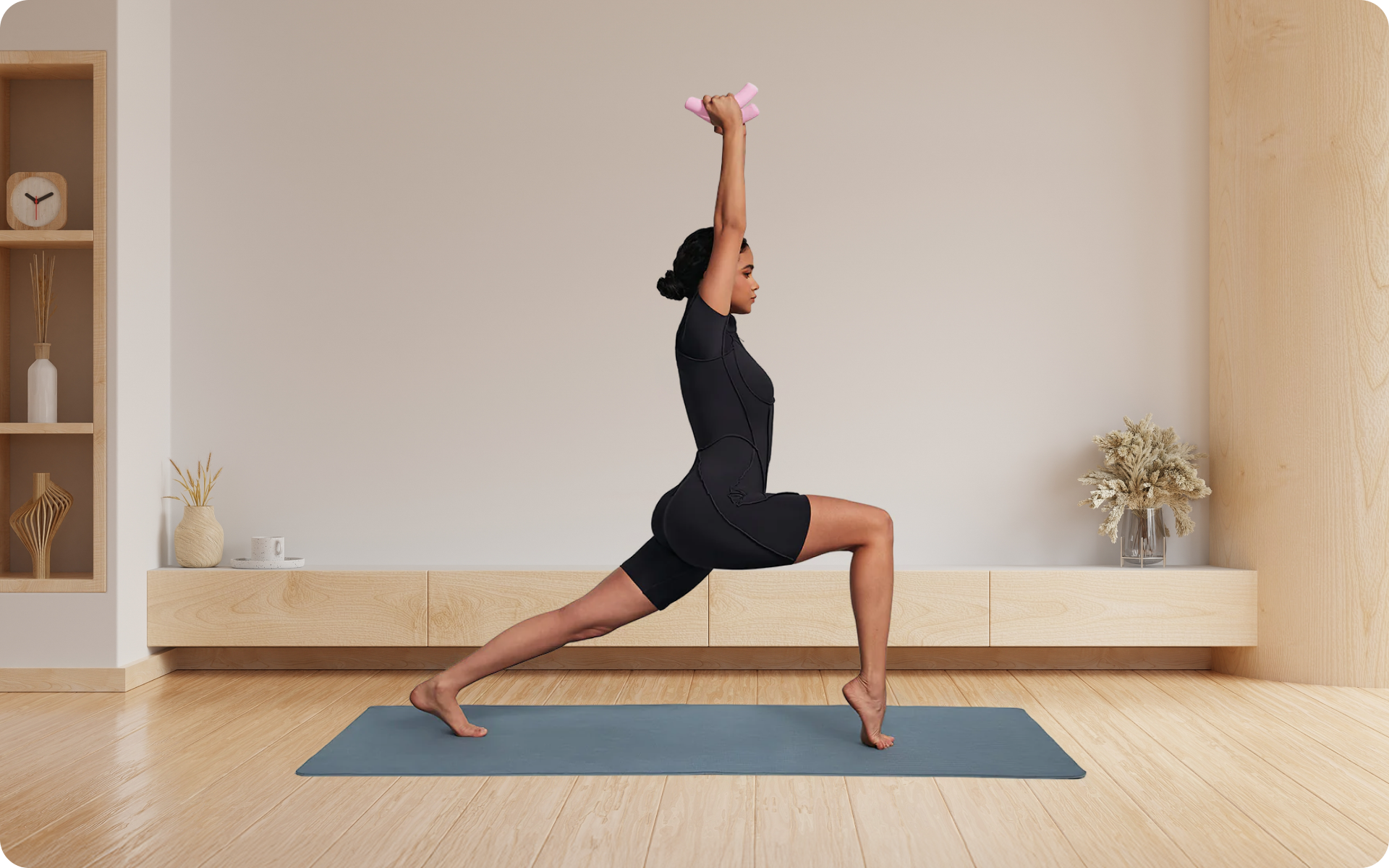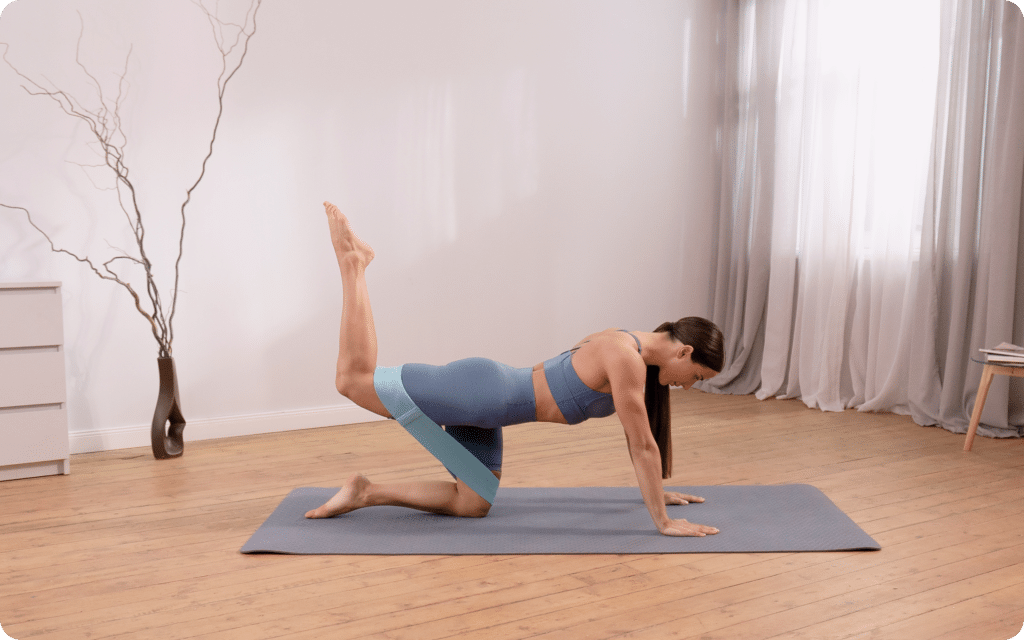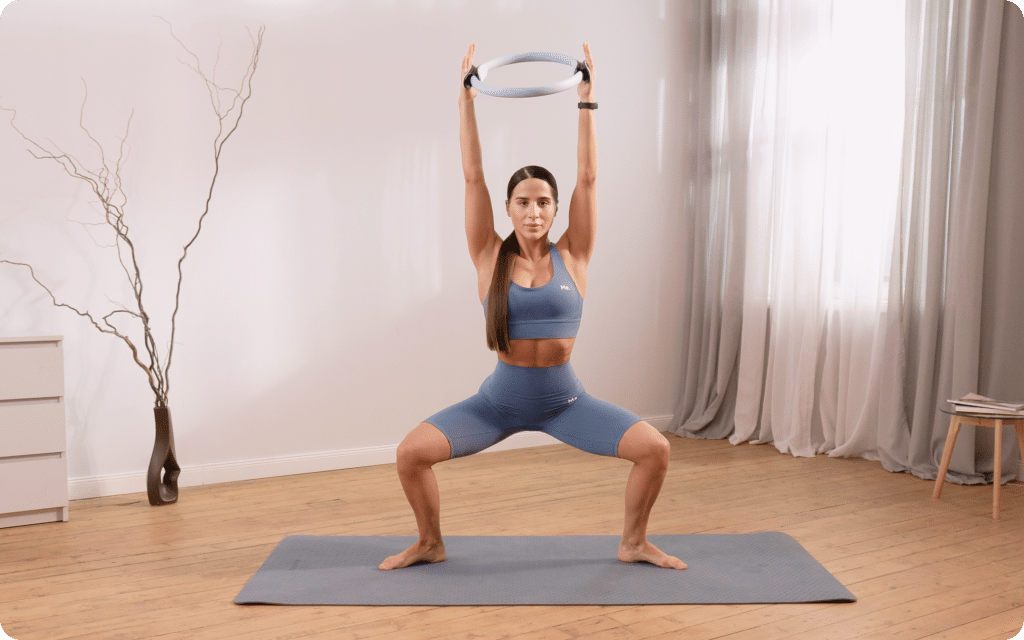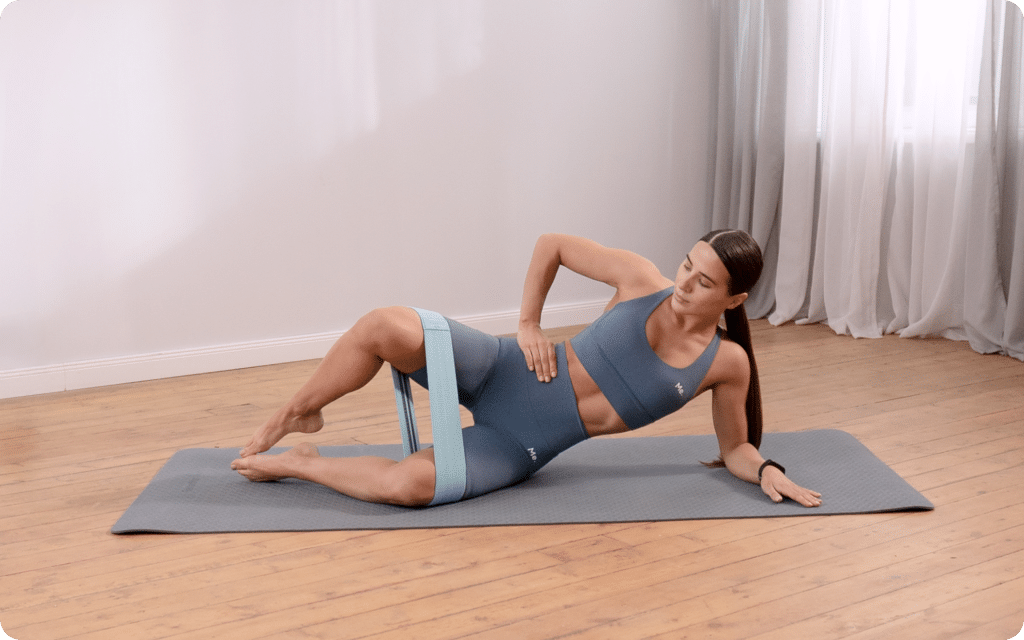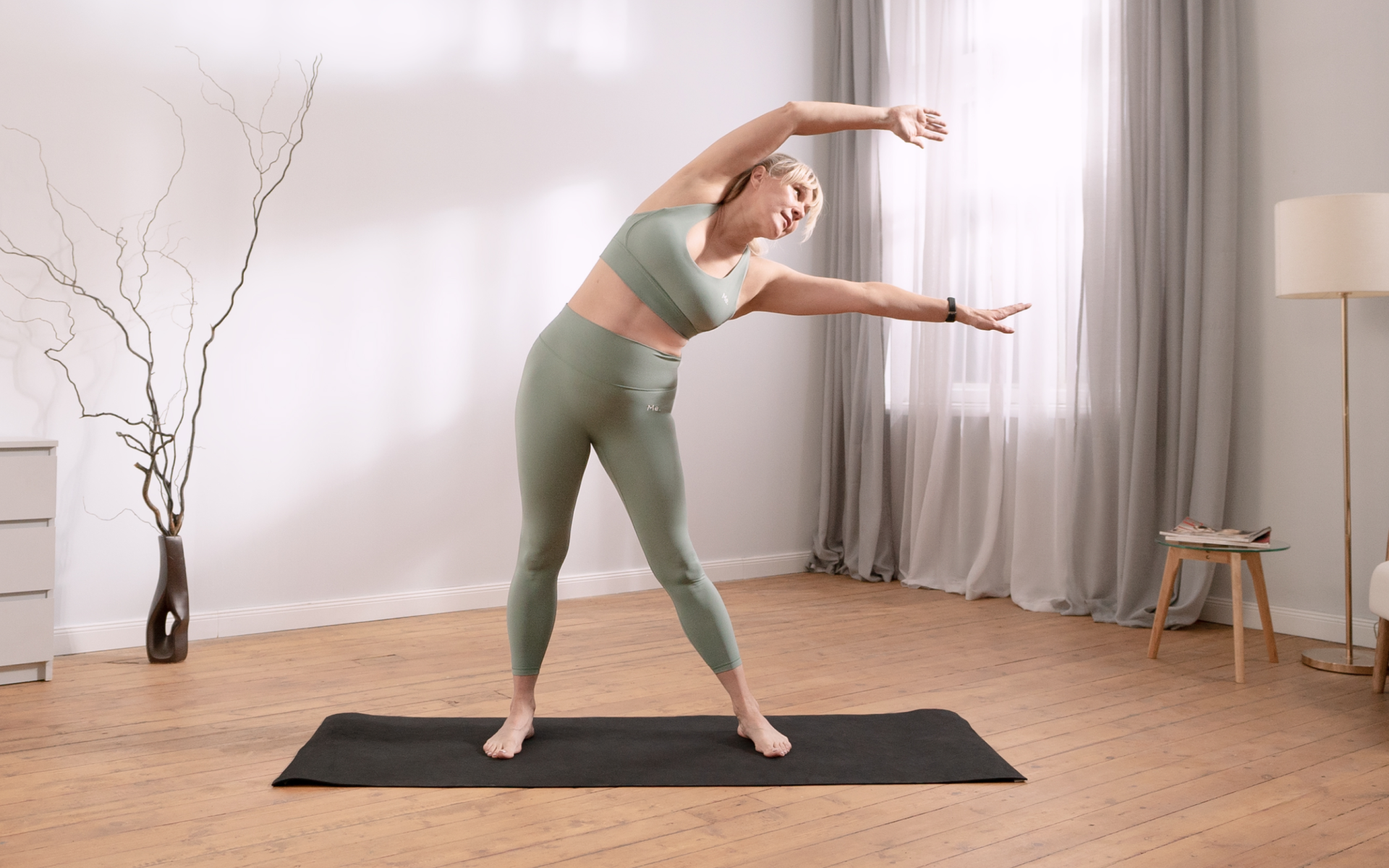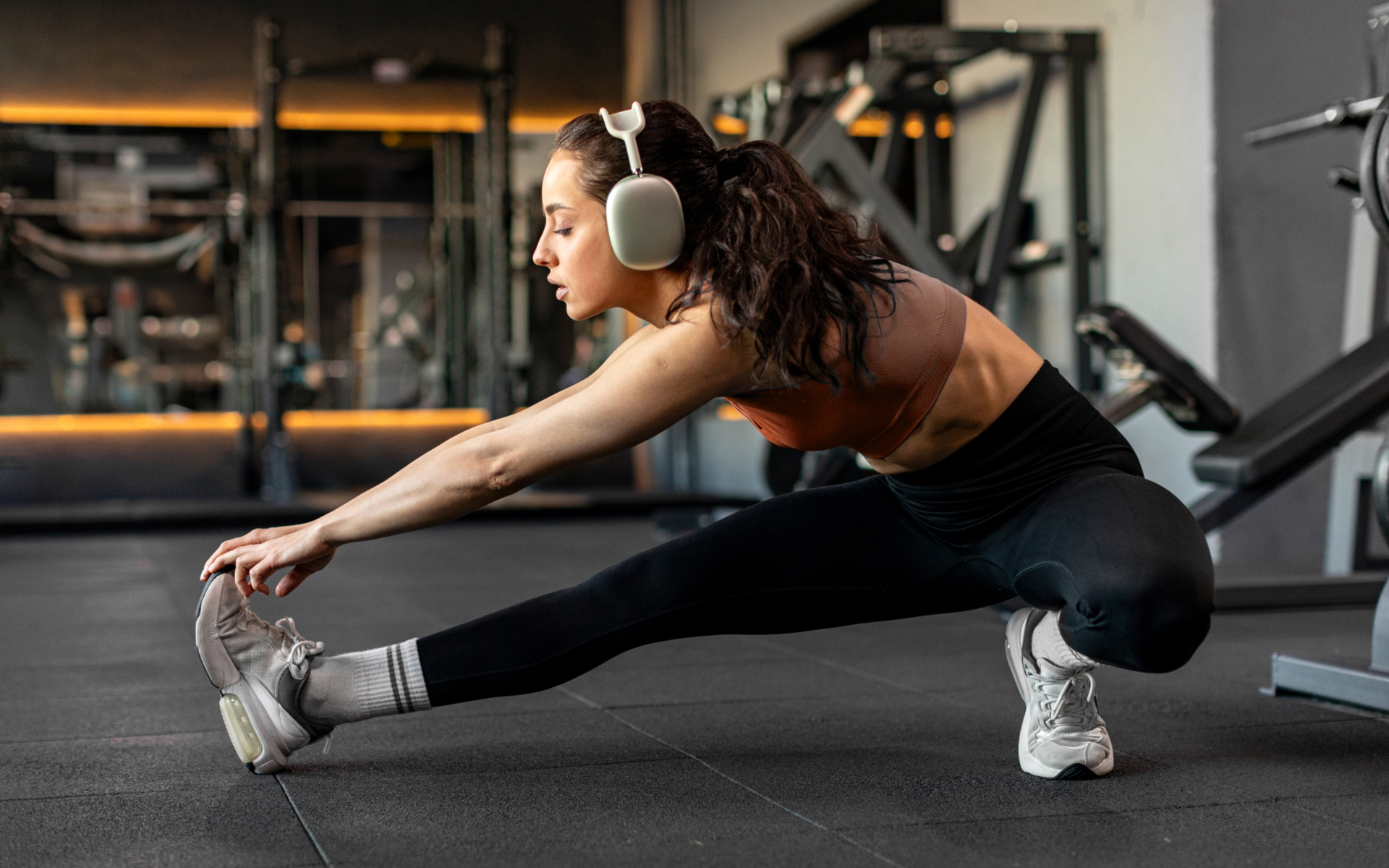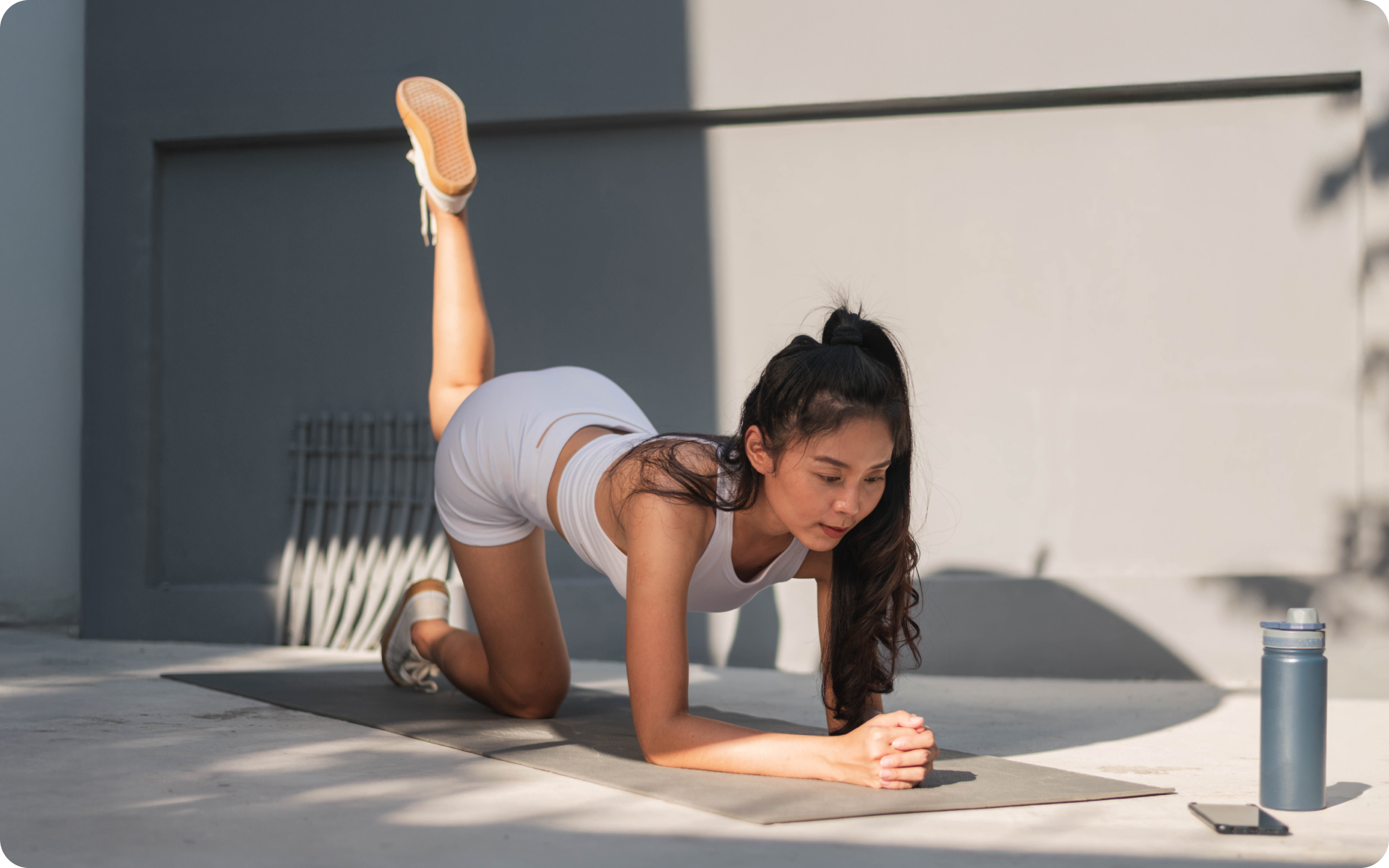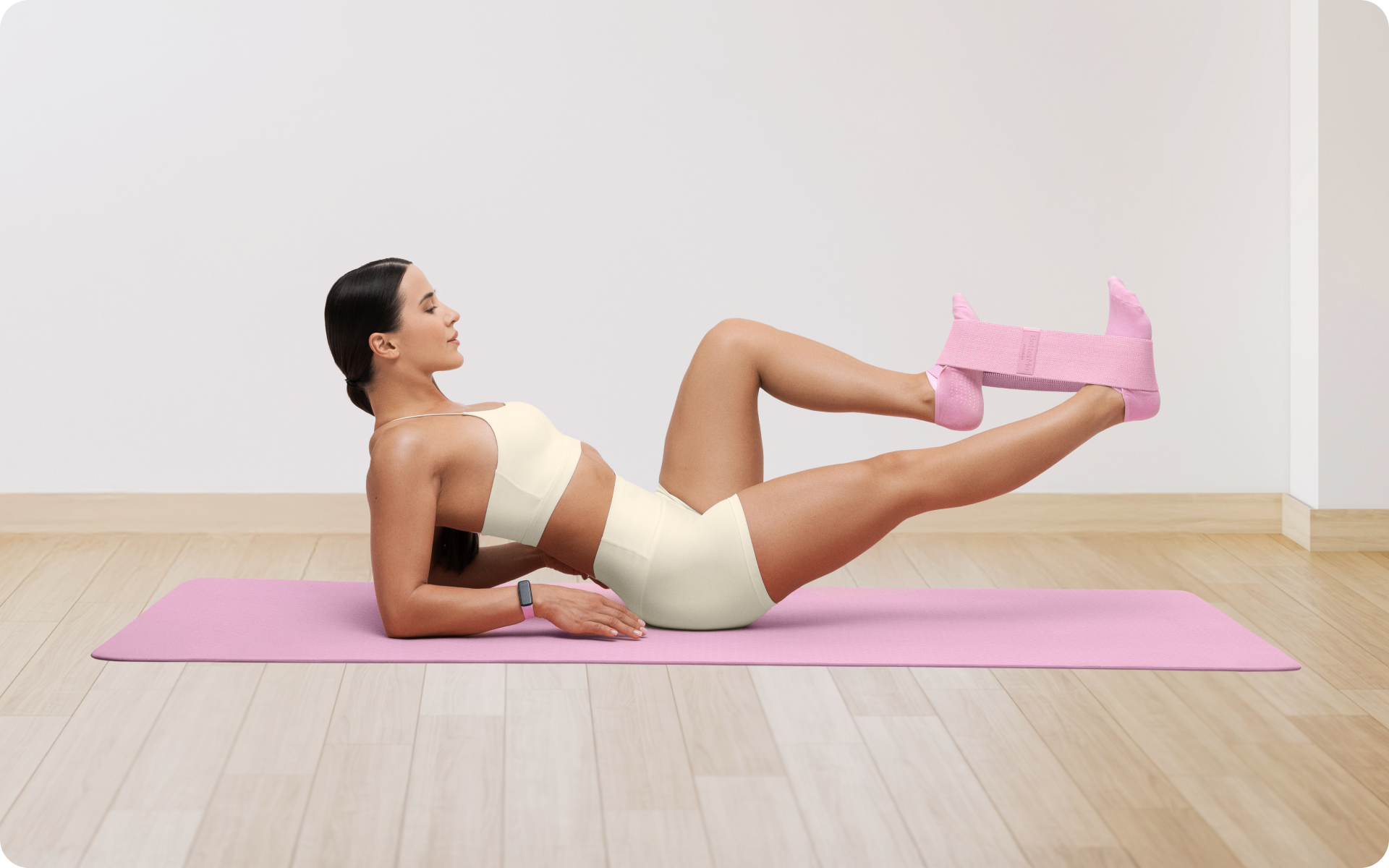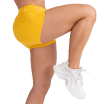Engaging in quad-focused exercises will help you boost your leg strength, improve mobility and balance, build lean muscle, improve knee support, and make your daily tasks more efficient. Of course, there are a great number of benefits you’ll get by engaging in this type of exercise that targets the quadriceps muscles.
It’s important to understand that the quadricep muscles (located at the front of your thighs) support walking, running, and jumping, among other simple daily activities.
Back to quad-focused exercises, this article will help you understand the type of exercises that are good for quads and everything else you need to know. Therefore, whether you’re an athlete, a fitness beginner, recovering from injury, having knee issues, living a sedentary lifestyle, or a senior, these exercises are exactly what you need.
What Are Some Quad-Focused Exercises?
Quad-focused exercises include isolation movements and compound exercises. Isolation movements are those that target the quads in a more direct way while compound ones are those that engage the different joints and muscle groups of the entire body. Some examples of quad-focused exercises include:
- Leg Press
Involves a minimal spinal load and is useful for strengthening the quads. It’s important to note that altering the foot position on the platform is effective for targeting the quads.
- Barbell Back Squat
This type of exercise engages the entire lower body. It’s a foundational and compound lower-body movement that also offers high electromyographic activation of the quadriceps.
- Barbell Front Squat
Squats with a barbell in front are good for allowing heavy loading. This movement can directly work the quads and efficiently target these muscles for growth. This also allows a full range of motion that’s useful for promoting maximum engagement and development of the quads.
- Leg Extension
This type of exercise is an isolated movement that directly targets the quadriceps muscles. Here, you’re working on extending your knee, which is the primary movement of the quadriceps muscles.
- Hack Squat
Hack squats also isolate and engage the quads in a full range of motion. With a hack squat machine, you can typically lift more weight than you would with a traditional barbell squat. By allowing yourself to carry more weight through a squat, you can promote more muscle growth and ultimately more quad development.
- Heel Elevated Goblet Squat
This exercise is beginner-friendly and uses elevated heels to get deeper into the squat. It’s useful for building lower body strength and improving the stability of the core.
If you wish to free yourself from all the extra pounds that have been weighing you down for way too long, start using the BetterMe: Health Coaching app and overhaul your entire life!
- Dumbbell Step-Up
This type of exercise is suitable for the quads as it targets them while also enhancing coordination. It’s important to note that step-ups have been found to be effective and ideal for engaging the quadriceps muscles in comparison to a single leg squat (2).
- Bulgarian Split Squat
This is an effective exercise that engages the glutes, hamstrings, core, and quadriceps muscles. This exercise can lead to improved unilateral strength and also build strength in the lower body. In addition, it’s effective for improving muscle balance and can be used to address muscle imbalances.
- Calisthenics Quad Exercises
Calisthenic quad exercises primarily target the quadriceps. Examples include the wall sits, step-ups, split squats or lunges, and bodyweight squats. Most of these exercises are not quad isolated as they work on the quads as well as on other muscles.
Read more: Does Pilates Flatten Your Stomach? All You Need to Know
Are Quads Hard to Grow?
Quads can be challenging to grow and require a lot of dedication and effort. Some of the factors that make it even harder for some people include things such as poor or inadequate nutrition, poor exercise selection, genetics, and lack of progressive overload.
However, it’s important to note that it’s possible to grow the quads. You’ll need to implement a targeted, consistent, and effective resistance training program with proper recovery.
While it can be challenging to grow the quadriceps muscles, you can make it possible by training your legs at least 2 times per week, eating enough calories and protein, focusing on progressive overload, and engaging in quad-focused exercises such as leg presses, squats, leg extension, and lunges.
How Can I Target My Quads?
To target your quads effectively, you need to be deliberate in the choice of exercises to conduct. These exercises should focus on engaging all four of the muscles that make up the quadriceps: vastus medialis, rectus femoris, vastus lateralis, and vastus intermedius.
Of course, there are a variety of exercises that have been shown to be effective in targeting the quadriceps muscles and, therefore, you need to combine a variety of exercises that will help you achieve your goals.
What Are the Most Effective Quad-Focused Exercises?
We’ll break down the most effective quad-focused exercises into compound and isolation exercises. Compound exercises are those that target multiple muscle groups (including the quadriceps) at the same time, while isolation exercises are those that target quadriceps muscles only.
- Compound exercises – these include barbell front squats, hack squats, leg press, heel-elevated goblet squats, step-ups, lunges (such as reverse, walking, and forward), quadruped exercises, and Bulgarian split squats.
- Isolation exercises – the main isolation exercise for developing the quadriceps muscles involves the leg extension machine. This directly targets the main movement of the quadriceps muscles (knee extension). This can also be done with a cable tree.
It’s important to note that these exercises will likely not be effective unless you have structured an appropriate workout program that emphasizes quadriceps development. Therefore, to maximize their effectiveness, you need to do the following:
- Focusing on proper form – you need to maintain proper form when engaging in any exercise, whether it’s compound or isolation exercises. This will make the exercises effective and prevent possible injuries that could otherwise occur.
- Using full range of motion – you need to go through the complete range of motion in any of the exercises to ensure you engage the muscle properly.
- Maintaining progressive overload – continuously manipulate the repetitions, sets, intensity, or duration of your workouts. Progressive overload is one of the principles of hypertrophy. You need to consistently challenge your body in order to see growth.
- Recovery and Warm Up – you need to emphasize recovery and warm-ups when working to strengthen the quadriceps or any muscle in the body. A proper warm-up is one that has you actively moving through different ranges of motion and one that specifically prepares you for the strength training to come. For recovery, you’ll want to complete static stretches after strength training and take 24 to 48 hours between quadricep specific strength sessions. Your body needs rest to properly repair its muscles and ultimately grow stronger.
- Controlling the lowering (eccentric) phase – lowering the weight slowly in your exercises will help to increase time under tension. .
How to Structure a Quad-Focused Leg Day
To structure an effective quad-focused leg day, you need to incorporate exercises that engage the different muscles of the quadriceps. Before we give you a sample structure, some of the key principles to observe include:
- Compound before isolation – it’s important to start with exercises that focus on multiple muscle groups before you start to isolate specific muscles. For example, do a front squat before getting into leg extensions.
- Prioritize quad exercises – you need to select more exercises that prioritize the quads or where the quadricep muscles are the prime movers. Think of movements that force your knees to bend and extend, remembering that the main movement of the quadriceps is knee extension.
- Maintain progressive overload – to continue challenging your muscles, you need to gradually increase the number of reps, sets, and weight.
- Vary the exercises – have a mix of different exercises that engage the quadricep muscles from different angles and those with different patterns and movements. This will help target the individual muscles that make up the quadriceps.
- Maintain proper form – throughout all the exercises, you need to ensure you’re always keeping the correct form to minimize the risk of injury.
- Have adequate rest – you need to allow enough time between the sets and workout days to allow for recovery. The muscles repair themselves during rest and break down through strength training exercises.
Reasons why BetterMe is a safe bet: a wide range of calorie-blasting workouts, finger-licking recipes, 24/7 support, challenges that’ll keep you on your best game, and that just scratches the surface! Start using our app and watch the magic happen.
Quad-Focused Leg Day Structure Sample
This is a sample structure of a quad-focused leg day. You can adapt and adjust it to suit your level of experience and the equipment you have by incorporating similar exercises and adjusting the number of reps and sets.
- Warm-up (5 – 10 minutes) – dynamic leg stretches (walking lunges with a twist, elephant walks, etc) and light cardio (walking, cycling, etc).
- Compound exercises – 4 sets of 6 -8 reps of barbell back squats. 4 sets of 6-8 reps of heel-elevated goblet squats.
- Unilateral work – 3 sets of 8 to 10 reps per leg of Bulgarian split squats.
- Isolation exercises – 3 sets of 12 to 15 reps of leg extensions.
- Cool-down (5- 10 minutes) – static stretching and foam rolling that focuses on the hips and quads.
Remember to use the principles listed above when creating your own workout. You can always make your own workout circuit that suits your personal needs, goals, and preferences from this simple structured sample.
Read more: The Power Of The Push-Pull Legs Routine: Train Smarter, Not Harder
Are 3 Exercises Enough for Quads?
Yes, 3 exercises can be an effective starting point for the quads. It would likely be enough for beginners who are new to exercise. For more experienced or advanced-level fitness enthusiasts, 3 exercises may not be enough and you may want to incorporate some other quad focused movements. Or you could even combine muscle groups and create a whole-body workout. Regardless of your level of fitness, it’s important to practice the principles of progressive overload. Muscle growth (hypertrophy) comes when you manipulate the sets, repetitions, intensity, or duration of your workout. Try out one of these exercises, find a weight you can control throughout the movement, and work to hit 6-8 reps. The next week, either increase the weight slightly or push for higher reps. This is a simple way to complete progressive overload, which is very effective in achieving muscle growth.
Can I Train My Quads Every Day?
It’s generally not recommended to train the quads every day. You need some rest for muscle recovery. Without rest, you could potentially develop overtraining syndrome or injure yourself to the point where you’re unable to exercise until you can get healthy again. Therefore, you need to give time for your muscles to recover after the workouts. For optimum benefits, you should aim for 12 to 20 sets per week targeting the same muscle. This can be broken down into training the same muscle twice a week (1). It’s not recommended to weight train every day. If you’re hoping to exercise daily, you’ll need variety in your workouts. This could be a strength session 4 times a week and 3 days dedicated to recovery, cardio, and other activities that get you moving.
With high-impact or high-intensity exercises, you need time to rest before proceeding to the next workout. Some of the low-impact exercises that are like routine activities such as walking, swimming, and yoga are generally safe to do every day as they don’t strain your body as much as strength training.
Weakness in the quads may be due to prolonged periods of inactivity, previous injuries, neurological conditions such as spine injury or stroke, and some poor exercise techniques. In addition, there could be other factors such as muscle imbalance or even underlying medical conditions. It’s always best to contact a medical professional before you get started on any new exercise routine. If you have any medical conditions that could lead to weak quads, it’s best to discuss this with a doctor and create a plan on how to stretch quads and tackle this issue effectively. As previously mentioned, it may be challenging to grow quads as you’ll need a lot of effort and dedication. It’s made even more challenging with wrong exercise selection, poor nutrition, genetics, and a lack of progressive overload. As shown above, there are many exercises that contribute to quad growth and development. Using a variety of these exercises is the best way to see results. Start off with compound movements and then move into isolation exercises. We all have unique bodies and what works for one individual may not be the best for you. Yes, cycling is great for the quads. During the power phase while striking the pedal or pushing down, you engage the quadriceps muscles through knee extension. It also helps improve the endurance and strength of the quads. However, it may not be one of the best for building quad mass. For quad mass, you’ll need to practice the principles of progressive overload and choose from the exercises listed above. Frequently Asked Questions
Why are my quads so weak?
Are quads hard to grow?
What exercise grows the quads the most?
Is cycling good for quads?
The Bottom Line
You’ve now learned the benefits of engaging in quad-focused exercises and how to incorporate them into your daily workouts to reap their benefits.
As previously mentioned, quad-focused exercises are good for a number of people, including athletes who want to boost performance, seniors who want to improve balance, or anyone who is recovering from injury or has knee issues. These muscles are very important for functional strength and just about anyone can benefit from quad exercises. Take what you’ve read here and try to practice this on your own. Remember to focus on proper form, recovery, and the principles of progressive overload.
DISCLAIMER:
This article is intended for general informational purposes only and does not serve to address individual circumstances. It is not a substitute for professional advice or help and should not be relied on for making any kind of decision-making. Any action taken as a direct or indirect result of the information in this article is entirely at your own risk and is your sole responsibility.
BetterMe, its content staff, and its medical advisors accept no responsibility for inaccuracies, errors, misstatements, inconsistencies, or omissions and specifically disclaim any liability, loss or risk, personal, professional or otherwise, which may be incurred as a consequence, directly or indirectly, of the use and/or application of any content.
You should always seek the advice of your physician or other qualified health provider with any questions you may have regarding a medical condition or your specific situation. Never disregard professional medical advice or delay seeking it because of BetterMe content. If you suspect or think you may have a medical emergency, call your doctor.
SOURCES:
- A Systematic Review of The Effects of Different Resistance Training Volumes on Muscle Hypertrophy (2022, pmc.ncbi.nlm.nih.gov).
- Comparison of Muscle Activity During Step Ups and Single Leg Squats (n.d., scispace.com).
- How many times per week should a muscle be trained to maximize muscle hypertrophy? A systematic review and meta-analysis of studies examining the effects of resistance training frequency (2019, pubmed.ncbi.nlm.nih.gov)
